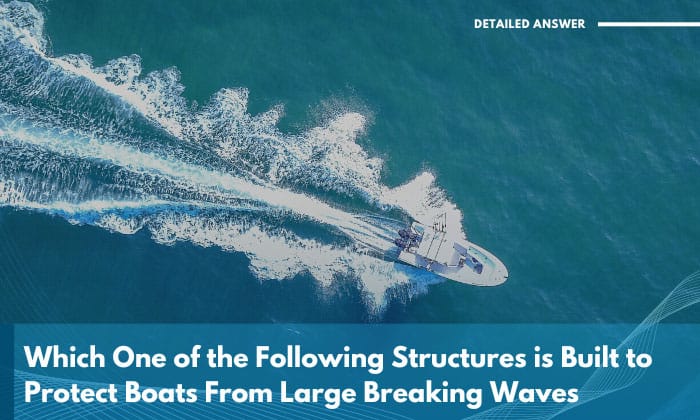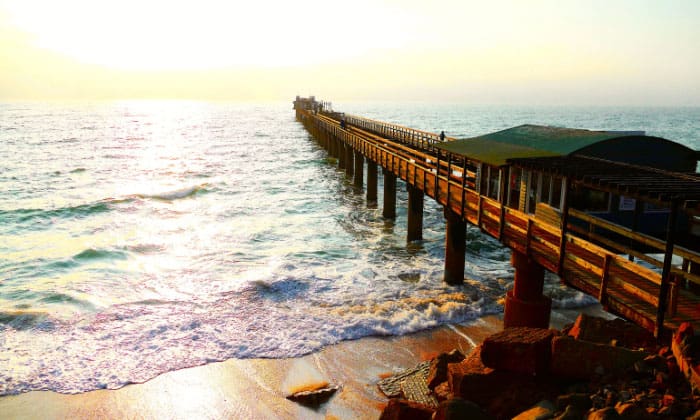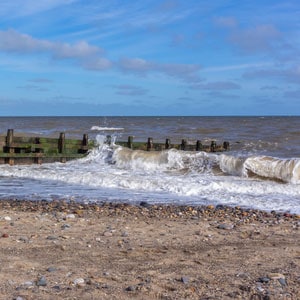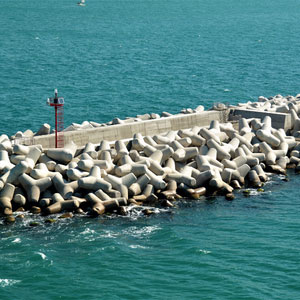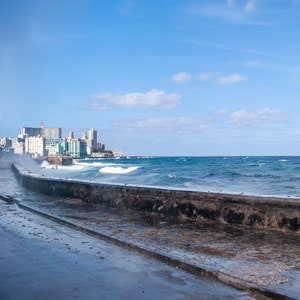Various coastal structures can be seen near the beach or sea, but which one of the following structures is built to protect boats from large breaking waves? You can choose from breakwater, groin, jetty, and seawall.
The answer is jetty; it does so by changing the flow and quality of water in a specific area. However, the other structures mentioned take up important roles as well. Keep reading to learn more about them.
Table of Contents
Which Structures Protect Boats From Large Breaking Waves?
What are jetties?
Jetties are very long but relatively thin structures built with different materials, including concrete, wood, and stone. They are situated from the beach or shoreline, toward the water, and can be either built singly or in pairs.
The purpose of a jetty is to alter the characteristics of waves and currents in an area to protect boats and the coast from the corrosive effects of water and sand. Other coastal structures may also be found along the water, but these offer protection so that vessels may dock safely near the shore.
Jetties share similarities with other shoreline structures. However, while their appearance and orientation are sometimes similar, a jetty on the beach should be easy to tell apart from other structures.
What do jetties do?
These are long structures that stretch out toward the water to limit the impact of waves and create a space where sand cannot flow. Jetties used for trapping sand reduce the need for dredging in an area or channel of water. That said, there must be a system installed to pump sand around the structure to prevent clogging.
Jetties are usually built in pairs to create a protected channel so boats may navigate safely, being shielded from breaking waves and any impact of water. Some also serve as a pier or mooring area and even as walkways over the water.
Other Structures: What Are Groins, Breakwaters, and Seawalls?
Aside from jetties and groins, other types of coastal structures are used to create safer conditions for ships, mainly by limiting the effects of water.
1. Groin
Groins on beaches are structures that are used to prevent erosion by trapping the sand in an area. They are laid out from the beach to the water, similar to jetties, but are smaller in scale.
Groins are typically made of concrete or large boulders. However, you can spot these structures being made out of sandbags or rocks as well.
The problem with sand groins is that they are too effective as sand traps and result in promoting sand erosion in areas perpendicular to the structures. It is theorized that groins may be causing more erosion than they are preventing.
Groins are smaller structures limited to a certain proximity to the beach, while a jetty in the ocean can be thousands of feet long. However, groins’ size and length can still cause a shift in an area’s shorelines and even change the tides.
2. Breakwater
These perform a similar function to jetties in altering and blocking waves to protect an area, such as the coast, but they are placed further away from the shore. Having this structure creates a calm harbor or marina, which benefits boats as well.
Breakwaters are built parallel to the coastline, they can be above or below the water and are usually made of concrete. These structures have the appearance of a mound of rock, and those built underwater are also called artificial reefs.
Breakwaters also greatly impact their surroundings and may cause significant erosion that can be problematic if not planned appropriately.
3. Seawall
Also known as revetment or bulkhead, these are built along the length of the shore to block waves from hitting the beach or structures nearby. They are often used to help certain areas withstand strong waves and flooding.
The seawall is usually constructed using granite or concrete and may be curved, stepped, or formed by a wall of rubble. Interestingly, Seawalls with smooth surfaces are not ideal as they promote sand erosion despite blocking the waves.
The ideal seawall should be curved with gaps or pockets that disperse the waves as they hit. Ultimately, it is believed that the best solution is to move structures out of the way instead of protecting them with a wall.
Conclusion
Now, when asked, “which one of the following structures is built to protect boats from large breaking waves?” you can know the answer: jetties. More than just an attraction, these structures play an important role in preserving beaches and coastlines as well.
Which coastal structure mentioned above do you find most interesting? Tell us your thoughts in the comments section below.

“My intention from the first day establishing Boating Basics Online is to provide as much help as possible for boaters who want to experience a first safe and convenient trip. So feel free to join us and share your beautiful journeys to the sea!”

